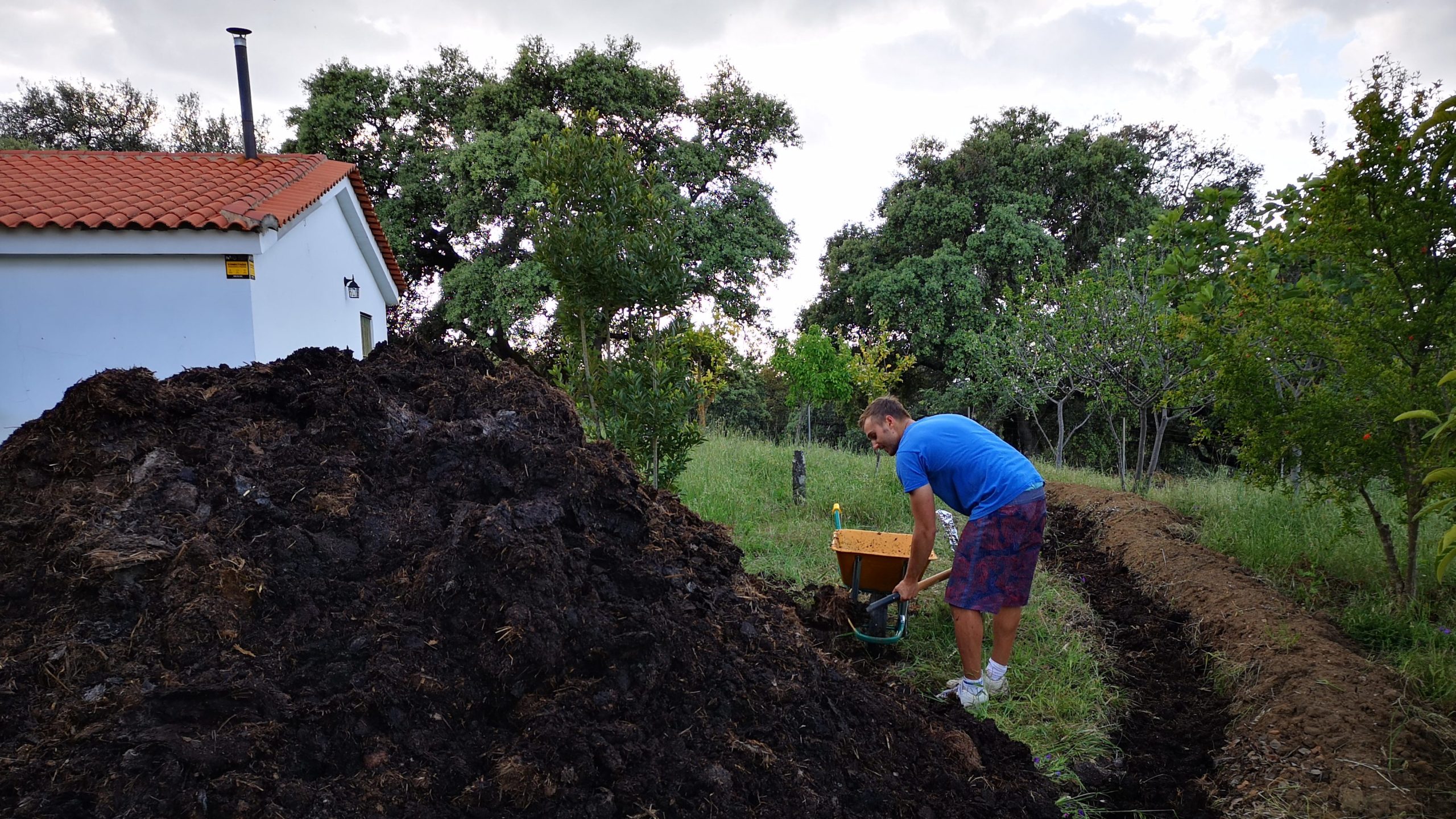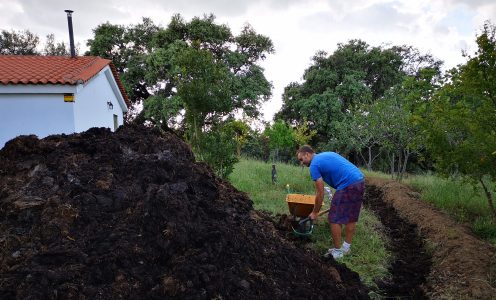
Are you tired of feeling stuck in your daily routine? Are you looking for ways to add more excitement and adventure into your life? Look no further! In this blog post, we’ll be discussing the top 10 activities that will help you break free from monotony and inject some fun into your life. Whether you’re an adrenaline junkie or a lover of relaxation, there’s something here for everyone. So, buckle up and get ready to spice up your life with these unforgettable experiences!
Benefits of Permaculture in Organic Farming
Permaculture is a method of sustainable agriculture that combines ecological principles with practical solutions to create a self-sustaining ecosystem. This approach to farming has gained popularity in recent years due to its numerous benefits for both the environment and the farmer.
One of the main advantages of permaculture is its ability to reduce environmental impact. By utilizing natural resources and working with the environment, permaculture farmers can reduce waste and maintain soil quality. This is achieved by using techniques like crop rotation, companion planting, and natural pest control. These methods not only reduce the use of harmful chemicals and fertilizers but also improve the overall health of the soil, leading to better crop yields and quality.
Another benefit of permaculture is its focus on community building. Permaculture farmers often collaborate with other farmers and local communities to share resources and knowledge. This fosters a sense of cooperation and encourages the development of sustainable practices on a larger scale. Additionally, permaculture farms can provide fresh, locally grown produce and contribute to food security in their communities.
Furthermore, permaculture farming can be financially sustainable for the farmer. By creating a diverse ecosystem, permaculture farmers can grow a variety of crops and raise livestock, which can lead to multiple income streams. Additionally, by reducing the need for expensive inputs like fertilizers and pesticides, permaculture can be a cost-effective alternative to conventional farming methods.
In conclusion, permaculture is a sustainable and effective farming method that has numerous benefits for both the environment and the farmer. Its focus on natural resource management, community building, and financial sustainability make it an ideal choice for those looking to practice sustainable agriculture. As more people become aware of the advantages of permaculture, we can hope to see its adoption increase and contribute to a healthier and more sustainable future.
Examples of Permaculture Techniques in Organic Farming
Organic farming is an increasing trend in agriculture as more people are becoming aware of the benefits of consuming chemical and pesticide-free produce. Permaculture is a set of principles and practices that help organic farmers design and maintain sustainable ecosystems that mimic natural systems. This essay will explore examples of permaculture techniques in organic farming, focusing on how these techniques contribute to environmental sustainability and food security.
One of the primary permaculture techniques in organic farming is companion planting. Companion planting is the practice of planting different crops in proximity to one another to create a mutually beneficial relationship. For example, planting legumes such as beans with corn provides a nitrogen source for the corn while the corn provides support for the beans to grow. Companion planting reduces the need for fertilizers, pesticides and herbicides, while increasing biodiversity and soil health.
Another permaculture technique is polyculture. Polyculture is the practice of growing multiple crops together in a single plot. This technique mimics natural ecosystems and promotes biodiversity. Polyculture reduces soil erosion and nutrient depletion, while increasing resilience to pests and diseases. In addition, polyculture provides a variety of crops and ensures food security for farmers and consumers.
Permaculture techniques also include the use of cover crops. Cover crops are crops grown mainly for the purpose of protecting the soil. Cover crops help prevent soil erosion, increase soil fertility, and reduce weed growth. Cover crops also serve as a habitat for beneficial insects and microorganisms, which help in soil health and pollination.
Finally, permaculture also promotes the use of natural pest management techniques such as insectary planting, where specific plants are grown to attract beneficial insects that prey on harmful pests. This technique eliminates the need for harmful pesticides that can harm beneficial insects and contaminate the environment.
In conclusion, permaculture techniques in organic farming are essential for environmental sustainability and food security. Companion planting, polyculture, cover crops and natural pest management techniques, all contribute to the design and maintenance of sustainable ecosystems, which mimic natural systems. Permaculture techniques help reduce the use of harmful chemicals and promote biodiversity, which in turn promote food security for farmers and consumers. It is essential that farmers adopt permaculture techniques to contribute to a more sustainable and healthy food system.
Challenges and Opportunities in Implementing Permaculture Techniques
Permaculture, a holistic approach to sustainable agriculture, is becoming increasingly popular as people around the world seek out ways to grow food and manage land without damaging the environment. However, the implementation of permaculture techniques presents both challenges and opportunities. This essay will explore these challenges and opportunities and how they can be addressed.
One of the main challenges in implementing permaculture techniques is the lack of knowledge and skills. Many people have grown up in a conventional agriculture system that relies on monoculture, chemical fertilizers, and pesticides. Permaculture requires a shift in thinking and practice, which can be daunting for those who are not familiar with it. However, opportunities exist to bridge this gap through education and training programs. For example, the Permaculture Institute of North America offers courses and workshops to teach people the principles and practices of permaculture.
Another challenge in implementing permaculture techniques is the lack of access to land. Permaculture requires a certain amount of space to work effectively, and not everyone has access to that space. Urban areas, for example, may not have large enough plots of land to create a permaculture system. However, there are opportunities to overcome this challenge through community gardens, rooftop gardens, and other creative solutions. Additionally, there are organizations, such as the Urban Permaculture Institute, that specialize in designing permaculture systems for small spaces.
Furthermore, permaculture faces challenges from conventional agriculture systems, which often receive subsidies and support from governments. This can make it difficult for permaculture to compete in the marketplace. However, there are opportunities to address this challenge by advocating for policy changes that support permaculture and sustainable agriculture. Organizations like the Permaculture Research Institute and the Organic Consumers Association are working to raise awareness about the benefits of permaculture and push for policy changes that will support its implementation.
Finally, permaculture faces challenges from climate change and other environmental threats. Extreme weather events, such as droughts and floods, can make it difficult to implement and maintain permaculture systems. However, permaculture also presents opportunities to address these challenges by promoting resilience and adaptation. Permaculture systems are designed to be self-sustaining, with diverse crops and planting patterns that can withstand weather extremes. Additionally, permaculture promotes soil health, which can help mitigate the effects of climate change.
In conclusion, while implementing permaculture techniques presents challenges, there are also many opportunities to overcome them. Education and training programs can help bridge the knowledge and skills gap. Creative solutions, such as community gardens and rooftop gardens, can help address the challenge of limited space. Advocating for policy changes can support the implementation of permaculture and sustainable agriculture. Finally, permaculture presents opportunities to address climate change and other environmental threats through resilience and adaptation. As more people become aware of the benefits of permaculture, we can work together to create a more sustainable and resilient future.

